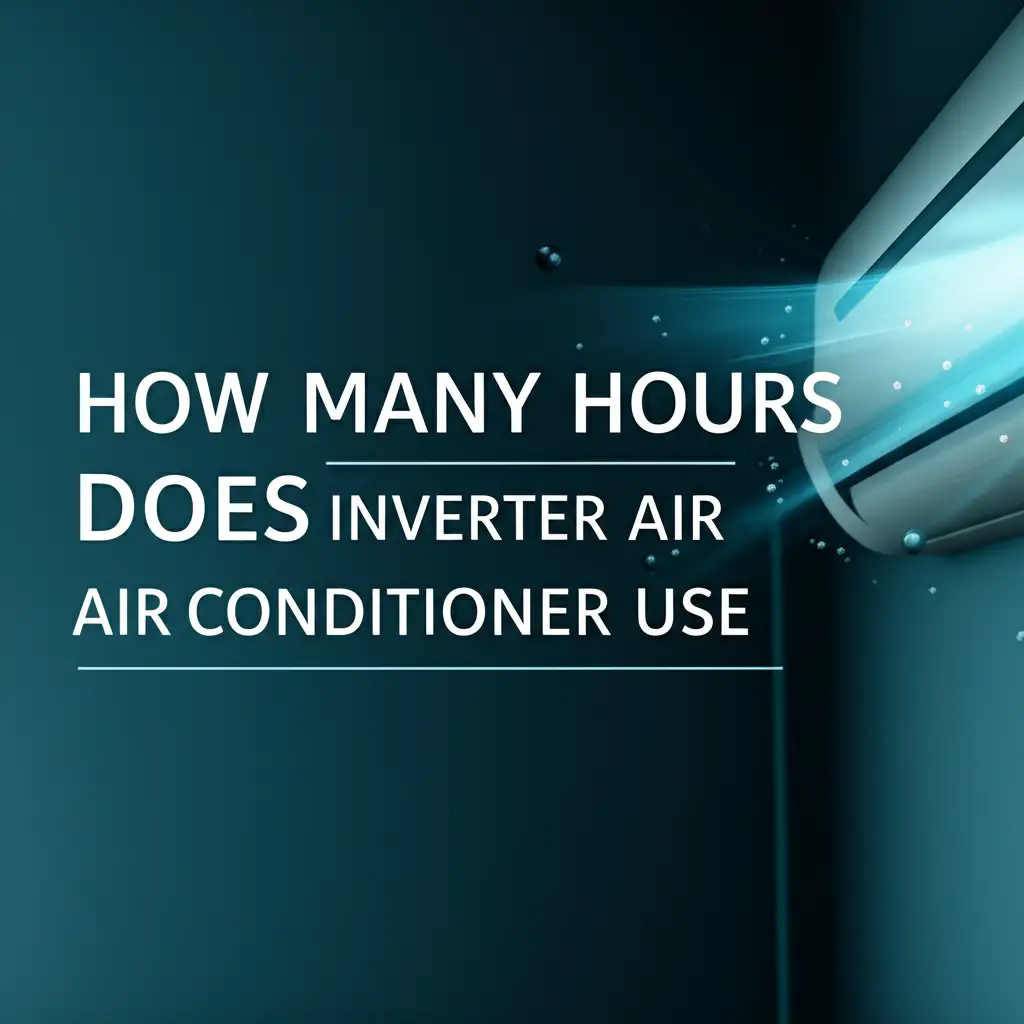· Davia Murnell · Home Improvement · 18 min read
How To Install Window Air Conditioner Units In Andersen Windows

Installing Window AC Units in Your Andersen Windows
Summer heat arrives quickly, turning comfortable homes into warm spaces. A window air conditioner offers a quick solution for personal cooling. But if you have Andersen windows, you might wonder about the best way to install a window air conditioner unit. My goal today is to show you exactly how to install window air conditioner units in Andersen windows, ensuring a snug fit and effective cooling.
This article provides a complete guide for a smooth installation process. We will cover choosing the right AC unit, preparing your window, installing support brackets, and sealing gaps. You will also learn about crucial maintenance to keep your unit running well and protect your Andersen windows. Get ready to enjoy a cooler home with confidence.
Takeaway
- Measure your window opening accurately to find a correctly sized AC unit.
- Always use a sturdy support bracket for external AC units to prevent damage.
- Seal all gaps around the AC unit with foam or weatherstripping to maximize cooling efficiency.
- Perform regular maintenance, like cleaning filters, to ensure optimal performance.
- Protect your Andersen window frame from stress and moisture during installation and use.
Quick Answer
Installing window air conditioner units in Andersen windows is possible with careful planning. You must choose an AC unit that fits your window type and size, use a proper support bracket, and seal all openings. This process ensures efficient cooling while protecting your window frame.
Understanding Andersen Window Types for AC Installation
Andersen Windows are known for their quality and specific designs. Before you install a window air conditioner unit, you must understand your Andersen window type. Not all window types support standard window AC units in the same way. Knowing your window type helps you plan for the best and safest installation.
Most window air conditioners fit best in double-hung windows. These windows have two sashes that slide vertically. Andersen offers many double-hung options. The bottom sash raises, creating a perfect opening for the AC unit. This design allows for straightforward support and sealing.
Casement and gliding windows are more challenging for standard AC units. Casement windows crank open outwards. Gliding windows slide horizontally. Neither of these types provides a simple vertical opening for a typical window AC. Special adapters or alternative cooling solutions, like portable air conditioners with vent kits, are often needed for these window styles. We talked about portable AC vents for crank windows in another article, which could be helpful if you have a casement window that cranks open: How to Install Portable Air Conditioner Vent with Crank Windows.
No matter the window type, measure the opening accurately. You need the exact width and height of the space where the AC unit will sit. This measurement is crucial for selecting an AC unit that fits properly. An ill-fitting unit creates air leaks and puts undue stress on your window frame. Consider the material of your Andersen window frame. Wood, Fibrex, or vinyl frames each react differently to pressure. Protect the frame by distributing the AC unit’s weight properly.
Essential Tools and Materials for a Seamless Window AC Installation
Proper preparation is key when you install a window air conditioner unit. Having the right tools and materials ready makes the job smoother and safer. You want to ensure your installation is secure and energy-efficient. Gathering these items before you start saves time and prevents frustration during the process.
Here is a list of tools and materials you will likely need:
- Tape Measure: Essential for accurate measurements of your window opening and the AC unit.
- Screwdriver (Phillips and Flathead): For assembling the AC unit’s side panels and securing it to the window frame.
- Drill (with appropriate bits): You might need this to pre-drill pilot holes if you are screwing into the window frame or sill, or for installing the support bracket.
- Level: To ensure the AC unit is slightly angled outwards. This angle allows for proper condensate drainage.
- Utility Knife or Scissors: For cutting weatherstripping, foam, or any other sealing materials.
- Safety Glasses and Gloves: Always protect your eyes and hands during DIY projects. AC units can be heavy and have sharp edges.
Beyond basic tools, you will need specific materials for the installation:
- Window AC Support Bracket: This is vital for safety. It bears most of the AC unit’s weight, reducing stress on your Andersen window frame. Ensure it is rated for the weight of your AC unit.
- Weatherstripping or Foam Insulation Strips: These materials are critical for sealing gaps around the AC unit. They prevent conditioned air from escaping and hot air from entering your room.
- Duct Tape or Foil Tape: Can be used for extra sealing on the exterior gaps or to secure foam insulation.
- Sash Lock or L-brackets: These provide added security by locking the window sash against the AC unit. They prevent the window from being opened from the outside.
- Small Wooden Blocks or Shims: Sometimes needed to level the AC unit or to create a snug fit if there are small gaps.
Having these items on hand ensures you can complete the installation efficiently. You will create a secure, energy-efficient setup for your window air conditioner unit.
Choosing the Right Window Air Conditioner for Your Andersen Window
Selecting the correct window air conditioner is as important as the installation process itself. An AC unit that is too small will struggle to cool your room. A unit that is too large will cycle on and off too frequently, wasting energy and not removing humidity effectively. When considering a window air conditioner for your Andersen window, focusing on BTU sizing and unit dimensions is crucial.
First, determine the right British Thermal Unit (BTU) capacity for your room. BTUs measure the cooling power of an AC unit. The correct BTU depends on the square footage of the space you want to cool. For example, a 150-square-foot room typically needs about 5,000 BTUs. A 400-square-foot room might require 10,000 BTUs. Other factors, like ceiling height, sunlight exposure, and the number of occupants, also influence the ideal BTU size. We have a detailed guide that explains how to calculate the right size AC unit for your space: How to Figure Out What Size Window Air Conditioner You Need. This guide will help you avoid common sizing mistakes.
Next, you must consider the physical dimensions of the AC unit. Measure the width and height of the actual opening in your Andersen window where the AC will sit. Remember that Andersen windows come in various sizes, so custom measurements are important. Pay attention to the minimum and maximum window width specifications listed for the AC unit. Most window AC units come with accordion-style side panels that expand to fill the window opening. Ensure the unit’s height allows your window sash to close securely over it.
Look for energy-efficient models. Check the Energy Efficiency Ratio (EER) or Seasonal Energy Efficiency Ratio (SEER) ratings. Higher numbers indicate better energy efficiency, which saves you money on electricity bills. Modern units also offer features like remote controls, digital thermostats, and sleep modes. These features enhance comfort and convenience. Choosing a unit with these options can make your cooling experience better.
Step-by-Step Guide to Installing Your Window AC Unit Securely
Installing a window air conditioner unit in your Andersen window requires precision and attention to detail. Following these steps ensures a secure fit, efficient operation, and protection for your window. Always work carefully and do not rush the process.
1. Prepare Your Andersen Window
Begin by cleaning the window sill, frame, and glass. Remove any dirt or debris that might interfere with a tight seal. A clean surface helps new weatherstripping adhere better. Inspect the window frame for any signs of damage. If your Andersen windows are a newer Renewal by Andersen type, they might have specific cleaning needs. You can learn more about proper cleaning techniques for these windows here: How to Clean Renewal by Andersen Windows. Proper preparation ensures the AC unit sits flush and seals effectively.
2. Assemble the AC Unit
Most window AC units come with side panels that need to be attached. Slide these accordion-style panels into the channels on either side of the unit. Some units might require screwing the top rail into place. Follow the manufacturer’s instructions carefully for this step. These panels provide the extending width to fill your window opening.
3. Install the Support Bracket
This step is critical for safety and window protection. Place the external support bracket on the outside of your window sill. Adjust its legs to ensure the bracket is level and firmly supports the AC unit’s weight. The bracket should slightly tilt the AC unit outwards. This small tilt allows condensation to drain properly, preventing water from pooling inside your home. Secure the bracket to the window frame or house siding according to its instructions. Ensure it is stable and can bear the AC unit’s full weight.
4. Position the AC Unit
With assistance if needed, carefully lift the AC unit and place it onto the support bracket and into the window opening. Slide the unit forward until the bottom channel of the AC unit rests securely on the window sill. Lower the top window sash down until it meets the top of the AC unit. The sash should fit snugly into the groove on the AC unit’s top rail. This helps hold the unit in place.
5. Extend and Secure Side Panels
Pull out the accordion side panels to fill the gaps between the AC unit and the window frame on both sides. Many units have holes in these panels for screws. Use screws to attach the side panels to the window frame. This provides additional stability and helps seal the opening. Be careful not to overtighten screws, especially with vinyl or Fibrex frames, to avoid cracking.
6. Seal Gaps and Secure the Window
Now, you must seal all remaining gaps. Apply foam insulation strips or weatherstripping around the perimeter of the AC unit where it meets the window frame. Focus on the top where the sash meets the unit, and along the sides. You can also use duct tape or foil tape on the exterior for an extra seal. Finally, install the provided sash lock or an L-bracket to prevent the window from being opened from the outside. Screw it into the top sash and window frame, effectively locking the window down onto the AC unit. This adds security and prevents unwanted movement.
Completing these steps properly ensures your window air conditioner unit is installed securely. You can now confidently turn on your AC and enjoy the cool air.
Ensuring Optimal Performance and Energy Efficiency Post-Installation
Installing your window air conditioner unit is only the first step. To get the most out of your AC and save on energy bills, you need to ensure it runs efficiently. Optimal performance means your unit cools effectively without working too hard. This involves proper sealing and regular maintenance.
The most important factor for energy efficiency after installation is sealing all air leaks. Even small gaps around your window AC unit can let in warm air. These leaks force your AC to run longer and consume more power. Check all edges where the AC unit meets your Andersen window frame. Use additional weatherstripping or foam insulation tape if you find any gaps. You can also use caulk for more permanent seals on the exterior, but choose one that is removable if you plan to take the unit out seasonally. A tightly sealed unit keeps the cool air inside, making your home more comfortable and reducing energy waste.
Regular cleaning is vital for AC performance. The air filter should be cleaned or replaced regularly, typically every two to four weeks depending on usage. A dirty filter restricts airflow, making the unit work harder and reducing its cooling capacity. Most filters are washable; simply remove them, rinse with warm water, let them dry completely, and put them back. You should also clean the condenser and evaporator coils periodically. These coils collect dirt and dust over time, which reduces their ability to transfer heat. Dirty coils can make your unit run less efficiently and increase energy consumption. We have detailed guides on how to clean various parts of your air conditioner, which are very helpful. For instance, you can learn how to clean your air conditioner filter here: How to Clean Air Conditioner Filter. Additionally, for cleaning the crucial coils, check out: How to Clean Air Conditioner Coils.
Checking for proper drainage is another key maintenance task. Your AC unit removes humidity from the air, which produces condensate water. This water should drain outside the unit. If you notice water pooling inside or around the unit, the tilt might be incorrect. Adjust the unit to ensure it slightly slopes outwards. This prevents water damage to your window sill and helps the unit operate correctly. Proper maintenance not only boosts performance but also extends the lifespan of your air conditioner.
Troubleshooting Common Issues and Maintenance Tips
Even with a perfect installation of your window air conditioner unit, issues can sometimes arise. Knowing how to troubleshoot common problems can save you time and money. Regular maintenance also helps prevent these issues from happening. Let’s look at some frequent concerns and how to address them.
One common complaint is that the window AC unit is running but not cooling effectively. Several factors can cause this. First, check if the air filter is clean. A clogged filter severely reduces airflow and cooling capacity. If the filter is clean, inspect the coils. Dirty condenser coils on the outside or evaporator coils on the inside can hinder heat exchange. You might find a guide on why your window AC is not cooling as it used to be helpful: Why is My Window Air Conditioner Not as Cold as It Used to Be. This can often be resolved by cleaning. Also, ensure there are no major air leaks around the unit that allow warm air into the room.
Another frequent problem is water leaking from the AC unit. This usually happens when the unit is not properly tilted, or its drain pan is clogged. The unit needs a slight downward tilt towards the outside to allow condensation to drain away. If the tilt is correct, check the drain pan and drainage holes for clogs from dirt or algae. Cleaning these can solve the problem. If water leaks from the front, it often points to an internal drainage issue or a severely clogged filter. We discuss this in more detail here: Why Is My Window Air Conditioner Leaking Water From the Front.
If your window AC unit keeps tripping the circuit breaker, it indicates an electrical overload. This can happen if the unit is on an old circuit not designed for the power it draws. It might also occur if other high-power appliances are on the same circuit. Sometimes, a faulty AC unit itself can cause this. Ensure your unit is plugged directly into a dedicated wall outlet, not an extension cord. If the problem continues, a professional electrician should inspect the wiring. For further guidance on this specific issue, you can refer to: Why Does My Window Air Conditioner Keep Tripping the Breaker.
Seasonal maintenance is also important. At the end of the cooling season, it is often best to remove the window AC unit. Clean it thoroughly, dry it, and store it in a dry place. This prolongs its life and prevents damage from winter weather. Before removing it, consider if covering your window air conditioner in the winter is beneficial if you choose to leave it in place: Is It Good to Cover Your Window Air Conditioner in the Winter. Regular maintenance, including cleaning and proper storage, will keep your unit ready for many cooling seasons.
Protecting Your Andersen Windows During and After AC Use
Your Andersen windows are a significant investment in your home. While installing a window air conditioner unit provides comfort, it is essential to protect your windows throughout the process and during use. Improper installation or neglect can lead to damage, affecting your windows’ integrity and efficiency. My focus is always on both comfort and preservation.
One of the main concerns is the stress placed on the window frame. A window AC unit is heavy, and its weight can strain the sash and frame. This is why an external support bracket is not just recommended, but vital. The bracket bears most of the unit’s weight, distributing it away from the window components. Without proper support, your window sash could warp, or the frame could sustain structural damage over time. Always ensure the bracket is securely fastened and can handle the specific weight of your AC unit. Do not rely solely on the window frame to hold the unit.
Preventing water damage is another key aspect. Window air conditioners create condensation, and this water must drain properly outside. As discussed, ensure the unit has a slight outward tilt. If water pools on your window sill or leaks into the room, it can damage wood frames, cause mold growth, or even compromise your wall structure. Inspect the drainage regularly. Clean any blockages in the unit’s drain pan to ensure clear water flow. You might also consider placing a small, absorbent mat on the interior sill to catch any incidental drips.
Regular inspection of your Andersen window components is also wise. After installing the AC unit and throughout its use, periodically check the window frame, sash, and sill for any signs of stress, cracks, or moisture. Pay attention to the areas where screws were used to secure the AC unit or side panels. If you notice any issues, address them promptly. This might involve tightening screws, reapplying sealant, or even adjusting the AC unit’s position. Maintaining your Andersen windows ensures their longevity and continued performance.
When it is time to remove the AC unit for the season, do so carefully. Clean the window area thoroughly. Any lingering moisture or debris could encourage mold growth or damage the window materials. By taking these precautions, you ensure that your window air conditioner unit cools your home effectively while preserving the beauty and function of your Andersen windows for years to come.
Frequently Asked Questions
Can I install an AC in any Andersen window?
You can install window AC units most easily in Andersen double-hung windows. These windows slide vertically, providing a suitable opening. Casement and gliding (slider) Andersen windows are more challenging. They require special adapters or alternative cooling solutions like portable AC units, as their opening mechanism does not typically fit standard window ACs.
Do I need a support bracket for my window AC?
Yes, you should always use an external support bracket for your window AC unit. These brackets bear most of the unit’s weight. This protects your Andersen window frame from stress and potential damage. A support bracket also enhances safety, preventing the unit from falling, especially from higher floors.
How do I seal gaps around the AC unit?
To seal gaps, use foam insulation strips or weatherstripping around the perimeter of the AC unit. Apply these materials where the unit meets the window frame and sash. You can also use duct tape or foil tape on the exterior for an extra layer of sealing. Proper sealing prevents air leaks and improves cooling efficiency.
Will installing an AC void my Andersen window warranty?
Installing a window AC unit generally does not void your Andersen window warranty if done correctly. Avoid drilling into the main window frame unless specifically required by the AC unit instructions and you are certain it is acceptable. Damage caused by improper installation or an un-supported AC unit might not be covered. Always check Andersen’s specific warranty terms.
How do I remove the AC unit for winter?
To remove the AC unit for winter, simply reverse the installation steps. Disconnect power, remove any security locks, detach side panels, and carefully lift the unit out. Clean the unit thoroughly, allow it to dry completely, and store it in a dry, protected area. Clean your Andersen window frame before closing it for the winter.
How can I prevent drafts around my installed AC unit?
Prevent drafts by using thick foam insulation strips in all gaps around the AC unit. Pay close attention to the accordion side panels and where the window sash meets the top of the unit. Consider using an AC insulation cover designed for window units during the off-season. This adds an extra layer of draft protection.
Conclusion
Installing window air conditioner units in Andersen windows can be a straightforward project with the right approach. We have covered every essential step, from choosing the correct unit size to ensuring secure installation and vital maintenance. Remember, careful measurements, proper support with a bracket, and thorough sealing are key to success. My goal has been to simplify this process, making it accessible for any homeowner.
By following these guidelines, you not only achieve comfortable cooling but also protect your valuable Andersen windows. Regular cleaning of filters and coils, along with checking for proper drainage, will keep your unit running efficiently for years. This ensures lower energy bills and consistent comfort. Now you have the knowledge and steps to confidently install your window air conditioner unit in your Andersen window. Get ready to enjoy a perfectly cooled home, even on the hottest days, while preserving your home’s integrity.





